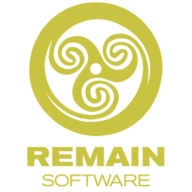

OpenText Application Quality Management and TD/OMS provide application management solutions. Based on feature satisfaction, TD/OMS has an advantage due to its comprehensive functionality, while OpenText is favored for its user happiness with cost and support.
Features: OpenText Application Quality Management includes automated testing, bug tracking, and test management, aiming for comprehensive quality assurance. TD/OMS offers change management, impact analysis, and code deployment, focusing on the development lifecycle.
Ease of Deployment and Customer Service: OpenText Application Quality Management offers flexible integration for various IT environments, with responsive customer service but longer resolution times. TD/OMS, designed for IBM i, provides seamless deployment and efficient support in its niche.
Pricing and ROI: OpenText Application Quality Management delivers competitive pricing and favorable ROI, attractive for large-scale operations. TD/OMS has a higher initial setup cost but offers long-term benefits through improved development efficiency.
| Product | Market Share (%) |
|---|---|
| OpenText Application Quality Management | 4.6% |
| TD/OMS | 0.6% |
| Other | 94.8% |
| Company Size | Count |
|---|---|
| Small Business | 39 |
| Midsize Enterprise | 32 |
| Large Enterprise | 161 |
OpenText Application Quality Management offers centralized data management, traceability, and integration capabilities. It aids in handling requirements, test planning, and defect tracking while supporting both manual and automated testing. Challenges exist in deployment and browser compatibility.
Known for its robust reporting and flexibility, OpenText Application Quality Management is tailored for large organizations requiring a comprehensive solution supporting lifecycle coverage and seamless tool integration. Users can consolidate testing processes, manage requirements, and centralize reporting across manual and automated testing. While some face issues with project tracking, outdated interfaces, and limited browser compatibility beyond Internet Explorer, it remains widely used for regression and performance testing. Integration with tools like JIRA and support for tools such as UFT and ALM PC underscore its utility.
What are the key features of OpenText Application Quality Management?In industries such as finance and healthcare, OpenText Application Quality Management is implemented to ensure rigorous testing standards. It supports test case creation and execution, defect tracking, and requirements management. Integration with JIRA and performance testing tools make it suitable for organizations needing synchronized testing environments.
TD/OMS is a cutting-edge software change and application lifecycle management tool, particularly for IBM i environments. It excels in change tracking, version control, and streamlined deployment, enhancing CI/CD operations.
Key features include robust version management, integration with multiple platforms, and automated tracking for better compliance. Users report significant improvements in organizational efficiency, workflow, and collaboration, fostering enhanced communication and optimized operational practices.
We monitor all Application Lifecycle Management (ALM) Suites reviews to prevent fraudulent reviews and keep review quality high. We do not post reviews by company employees or direct competitors. We validate each review for authenticity via cross-reference with LinkedIn, and personal follow-up with the reviewer when necessary.